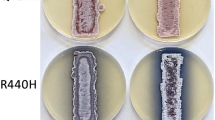A trace of prolylrapamycin is often produced in rapamycin fermentations carried out by strains of Streptomyces hygroscopicus. Prolylrapamycin was produced as the major rapamycin when L-proline was added to the fermentation medium. Addition of proline plus thiazolidine-2-carboxylic acid (T2CA), a sulfur-containing proline analog, prevented rapamycin production and stimulated prolylrapamycin production, thereby resulting in an even greater selective production of prolylrapamycin. T2CA addition inhibited rapamycin production even in the presence of L-lysine which is converted into pipecolic acid intracellularly and normally stimulates rapamycin formation. Addition of the rapamycin precursor, DL-pipecolic acid, surprisingly failed to stimulate rapamycin production. However, when DL-pipecolic acid was added with L-proline, it reduced the formation of prolylrapamycin and stimulated rapamycin production; this was evident especially in the presence of T2CA. The evidence suggests that T2CA suppresses rapamycin production by inhibiting intracellular conversion of L-lysine into pipecolate. Furthermore, the data suggest that uptake of pipecolate into the cell is stimulated or induced by growth in the presence of L-proline and/or T2CA.
Similar content being viewed by others
Author information
Authors and Affiliations
Additional information
Received 24 December 1997/ Accepted in revised form 12 May 1998
Rights and permissions
About this article
Cite this article
Kojima, I., Demain, A. Preferential production of rapamycin vs prolylrapamycin by Streptomyces hygroscopicus . J Ind Microbiol Biotech 20, 309–316 (1998). https://doi.org/10.1038/sj.jim.2900530
Issue Date:
DOI: https://doi.org/10.1038/sj.jim.2900530




